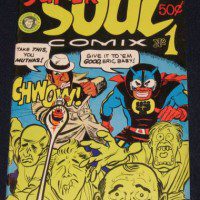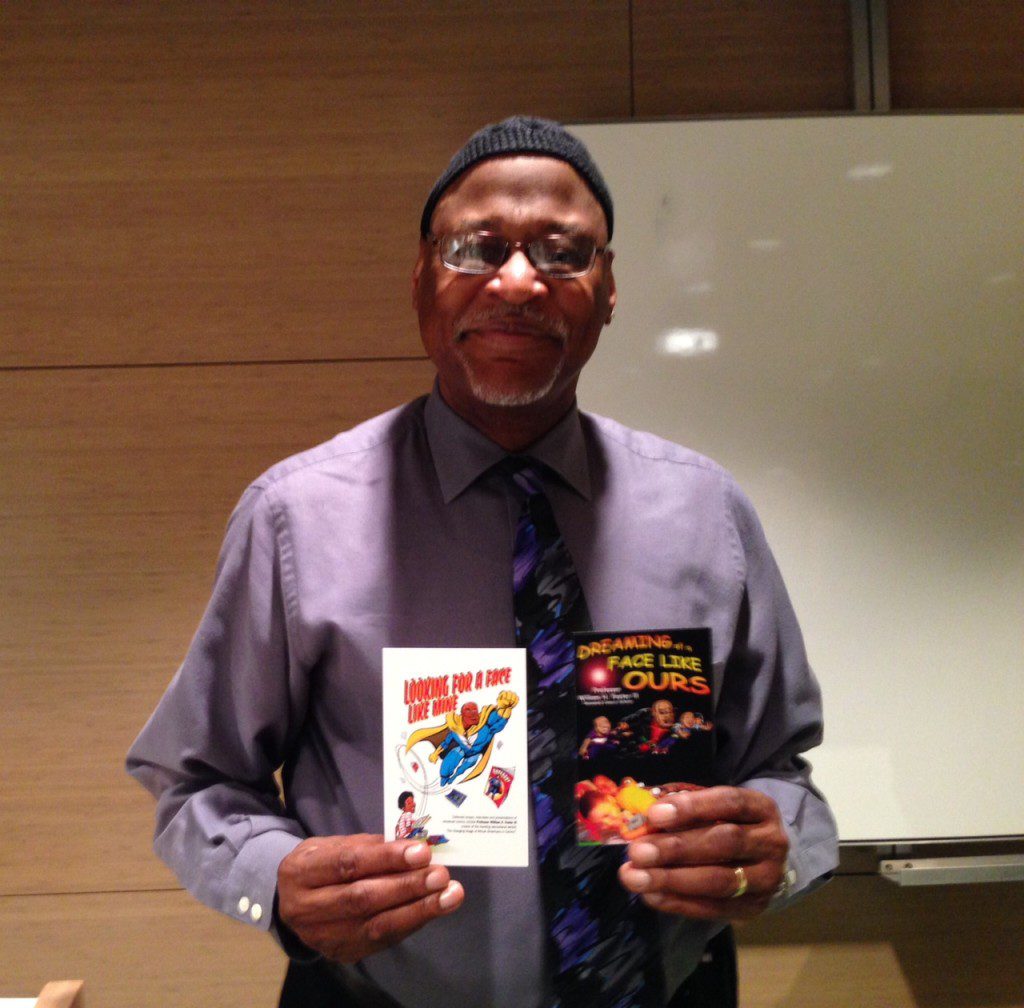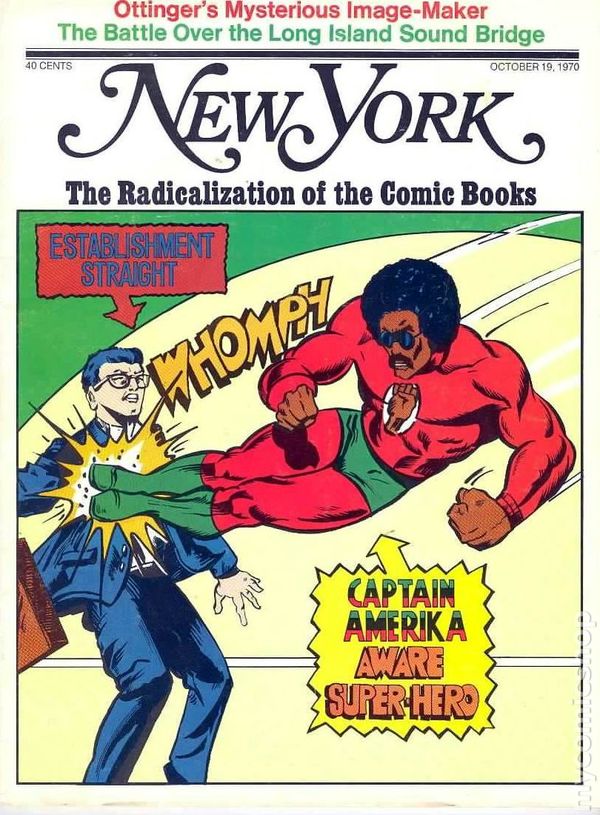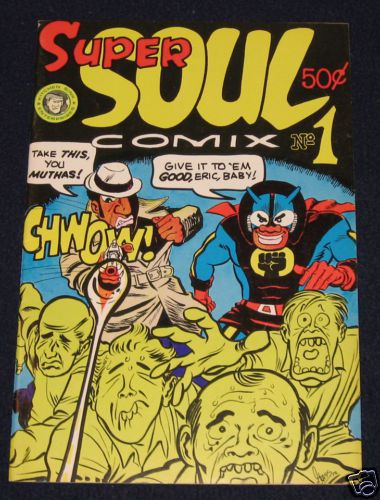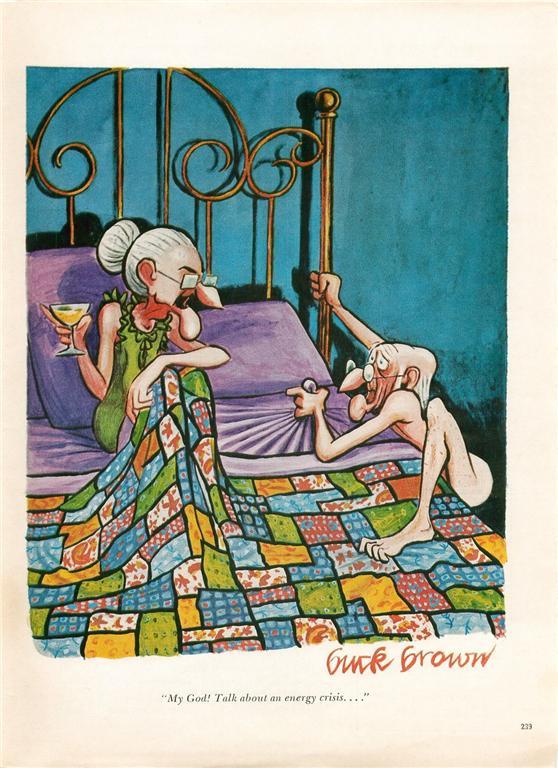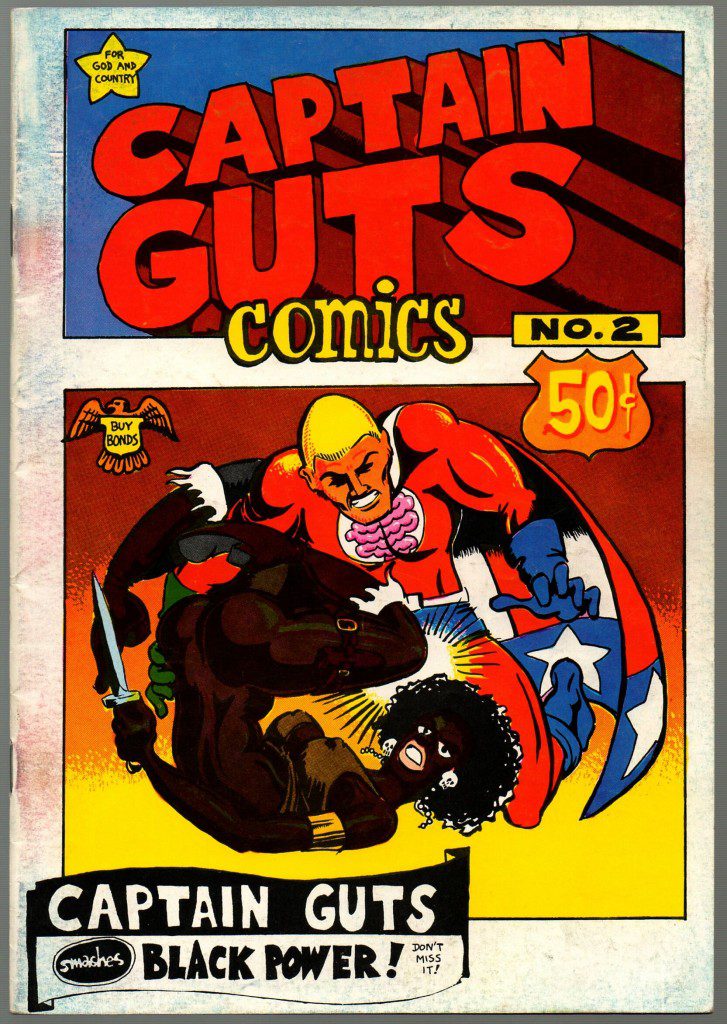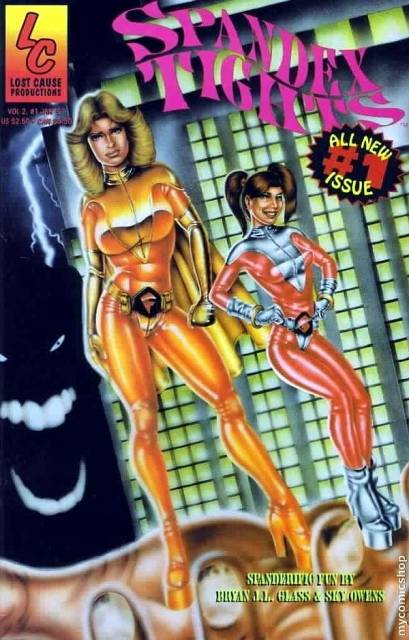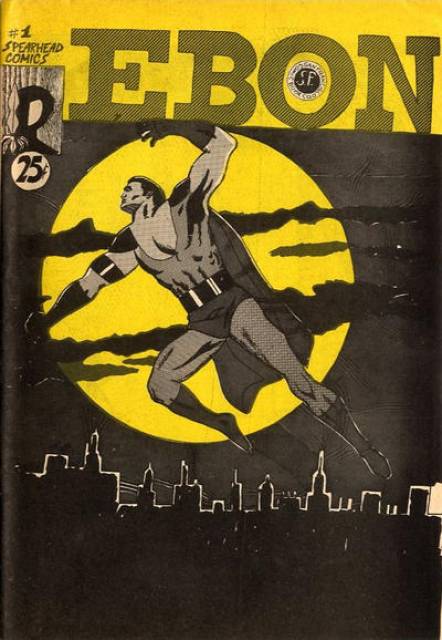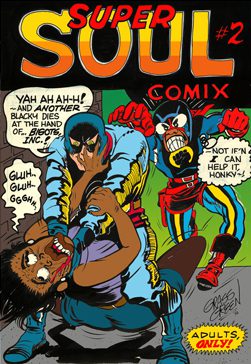The New York Comics & Picture-Story Symposium is a weekly forum for discussing the tradition and future of text/image work. Open to the public, it meets Monday nights at 7-9pm EST in New York City. Presentations vary weekly and include everything from historical topics and technical demonstrations to creators presenting their work. Check out upcoming meetings here.
This week, longtime writer, educator, and researcher Prof. William H. Foster III spoke at the symposium about the legacy of black artists and writers in underground comix. Currently an English professor at Naugatuck Valley Community College, Foster has also been the consultant for several comics-history exhibitions and is the author of Dreaming of a Face Like Ours and Looking for a Face Like Mine.
The importance of recognizing this history, Foster points out, is even more urgent because it is in danger of being lost to obscurity. “In all the anthologies of underground comix, I never see these guys mentioned,” Foster said. As comix creators and especially as black comix creators, these men faced many difficulties in distributing their work, which would later impact their ability to gain recognition. Foster noted several instances where the creator had died and his family didn’t know the historical value of the papers he left behind. Consequently, Foster has dedicated himself to finding and preserving as many examples of their work as possible.
Foster started his talk by defining the various terms he’d be discussing. The period of underground comix he focused on started in the early 1960s and continues to the present day. “Underground comix were effectively the grandchildren of Tijuana Bibles,” he said, referring to the non-mainstream, taboo, pornographic comics adventures of celebrities and cartoon characters. Although, he noted, you could also argue that underground comix started with Hugh Hefner and Playboy Magazine in the 1950s and 1960s. In 1938, the first Superman comic appeared and became an instant success. Shortly thereafter, in 1939, the first black comics superhero appeared: the African adventurer Red Mask. Red Mask sold dismally; the racism of the time did not make a receptive atmosphere for a black protagonist, something that continued to hurt sales even after they turned Red Mask into a white man. From their inception onward, what was crucial about underground comix was how they challenged the sexual, political, and racial mores of establishment culture. By being outside of the mainstream comics business, underground comix let creators express their feelings on the above topics on their own terms. Black comics creators around the country were inspired to make comic books in a “venue that was totally their own.” Foster pointed out that “individual cells [of cartoonists]” popped up all over the country, especially in San Francisco.
Because underground comix deal explicitly with sex, race, drugs, and violence, they’ve often had a rocky reception in mainstream circles. Foster defined their approach by showing a slide of a Robert Crumb image and explaining, “you either have to be in on the joke, or you are the joke.”
Satire is an especially powerful way to change people’s minds by making them laugh; it often runs into problems where those not “in on the joke” take it literally (and therefore miss the point). On the other side of the spectrum, political correctness is something that has a deadly effect on discourse; “it effectively means you can say nothing,” Foster said. That being said, he emphasized the importance of examining these works to see what the creator was actually saying. “You have to say something. Or are you just against everything?”
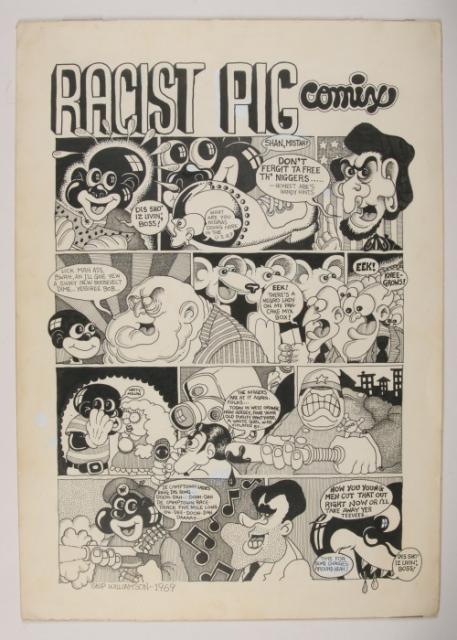
In Racist Pig (1969), the cartoonist uses exaggerated language and stereotypical images to make jokes about race and sex. “It’s rare to see these kinds of racial images in comic books,” said Foster. Most of the time, any representations of racial issues were just completely omitted. “Imagine if you were the only black character in a cartoon universe. You have to be everybody!…When something black came up [in a comic], they had to come to you,” Foster explained, which trapped black characters in mainstream comics as representatives of their race first and characters second. In the 1960s, every black character had to have “black” in their name, until finally characters like John Stewart appeared. He was just Green Lantern.
Foster’s first example was Richard “Grasshopper” Green, a black cartoonist and underground comix creator. Showing an image of Super Soul Comix #1 from the early 1970s, Foster described the protagonist’s journey from Vietnam vet to urban superhero (the comic parodies the typical superhero origin story). When the protagonist is hurt, a scientist “conveniently in the neighborhood picks him up and gives him superpowers.” This comic predates a lot of black superheroes and incorporates humor into the superhero story. The second issue never got printed. Green was a huge fan of Jack Kirby, and some of his images clearly show this influence. He worked on a huge range of projects, from fanzines to Charlton comics. “He was everywhere.”
Buck Brown was a cartoonist famous for the Granny comics in Playboy Magazine. “Many people didn’t know he was black,” said Foster, ascribing this to a time when a cartoonist could more easily preserve his/her anonymity than in the present day. Brown also made children’s books.
Foster then presented a comic called Captain Guts Smashes Black Power, a book by cartoonist Larry Welz (who happens to be white). Another superhero parody, this comic also uses exaggerated racial stereotypes for humor. But Foster questions whether the humor in this comic is working as satire, or as fairly conservative racial jokes placed in an underground comix setting. Captain Guts is an average white guy who becomes a superhero by chugging a beer. He sees a black woman and immediately thinks that she’s a prostitute. Antics ensue. “Is this a parody? Or is this just saying [things that] people think?” Foster asked, unsure what the message in the comic was. “But if you never address the issue, nothing gets said,” he also said, returning to his earlier point about how comics need to challenge the establishment, but also should be scrutinized for how well they work and what information they choose to convey.
Kevin Taylor is an artist best known for his erotic comics series, The Girl, which features the adventures of a voluptuous woman. Foster pointed out that the erotic nature of the character is coupled with her having power: she owns a nightclub, fights and defeats mafiosos, deals with the politics of her inner circle, and has psychic abilities. Taylor lives in Spain.
Preston Skylar Owens is a self-taught cartoonist who has worked for many comics publishers and is known for the characters Spandex Tights and Elastigirl. His comics deal with sexual themes and with humor (Foster highlighted one title in particular, “Summer Fun, Cliff-Hanging, Death-Trap, Bondage Special #1,” for having an especially fantastic name).
Cartoonist Larry Fuller made a comic called Ebon in 1977, a parody about the adventures of a black superhero who receives his powers from aliens. Copies of this comic are now difficult to find. Fuller, a cartoonist based in San Francisco, also went on to make the underground comix White Whore Funnies in the late 1970s.
Foster spoke at length about his fears that all these works will be lost, especially as the creators age and pass away. There is a real need for an archive for black cartoonists’ work, something easily accessible by other artists and scholars. He hasn’t found a solution yet, but remains hopeful.
To close, Foster explained how he saw the history of underground comix as stretching forward into the present day because of how democratic the medium remains (and how digital publishing has expanded it even further). “We have underground comix now, but it’s called ‘independently produced,’” Foster said.
During the Q&A, an audience member asked Foster about the tendency in scholarship to prioritize looking at the race and background of an author of a piece instead of focusing on the characters and story he/she created. Foster replied that ideally, one should take both elements into account. “It’s always complex,” he said, bringing up the Captain Guts comic as an example.
Other questions included one about the limited number of black protagonists in mainstream superhero comics and several questions about distribution methods impacting black cartoonists’ work in the past and present. Historically, distribution for black cartoonists’ work has always been complicated. It had a large effect on whether their comix found an audience or could sustain themselves, but was difficult to achieve. Cartoonist Bert Fitzgerald had trouble getting the two major distribution conduits for comics—newsstands and drugstores—to carry his work. Instead, he had to seek out nontraditional distribution methods, such as social-service agencies, church groups, and supermarkets. Nowadays, digital distribution is a powerful option for people making underground comix to disseminate their work.
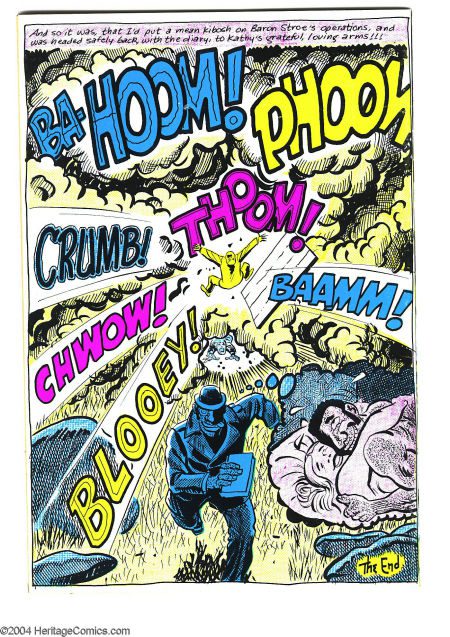
***
Image credits:
Image 1: Andrea Tsurumi, photo of Prof. William H. Foster III, 2013
Image 2: Cover of New York Magazine, Oct. 19, 1970 issue
Image 3: Robert Crumb, “Hey Mom! Let’s Have Nigger Hearts for Lunch,” The East Village Other, March 1-7, 1968
Image 4: Skip Williamson, “Racist Pig Comix,” Bijou #3, 1969
Image 5: Richard “Grasshopper” Green, Super Soul Comix #1, Kitchen Sink Enterprises, 1972
Image 6: Buck Brown, Granny comic, Playboy
Image 7: Larry Welz, Captain Guts#2: Captain Guts Smashes Black Power, Print Mint, 1970
Image 8: Skylar Owens, Spandex Tights #1, Lost Cause Productions, January 1997
Image 9: Larry Fuller, cover of Ebon, 1977
Image 10: Richard “Grasshopper” Green, Super Soul Comix #2, never printed.
Image 11: Richard “Grasshopper” Green, Super Soul Comix #1, Kitchen Sink Enterprises, 1972
***
Andrea Tsurumi is a NY-based illustrator and cartoonist who likes her robots sad and her history funny. She is the recipient of a 2013 MOCCA Award and was included in the 2013 Best American Comics notables list. You can see her work here and her latest projects here. She lives in Queens with Comics-poet Alexander Rothman.
